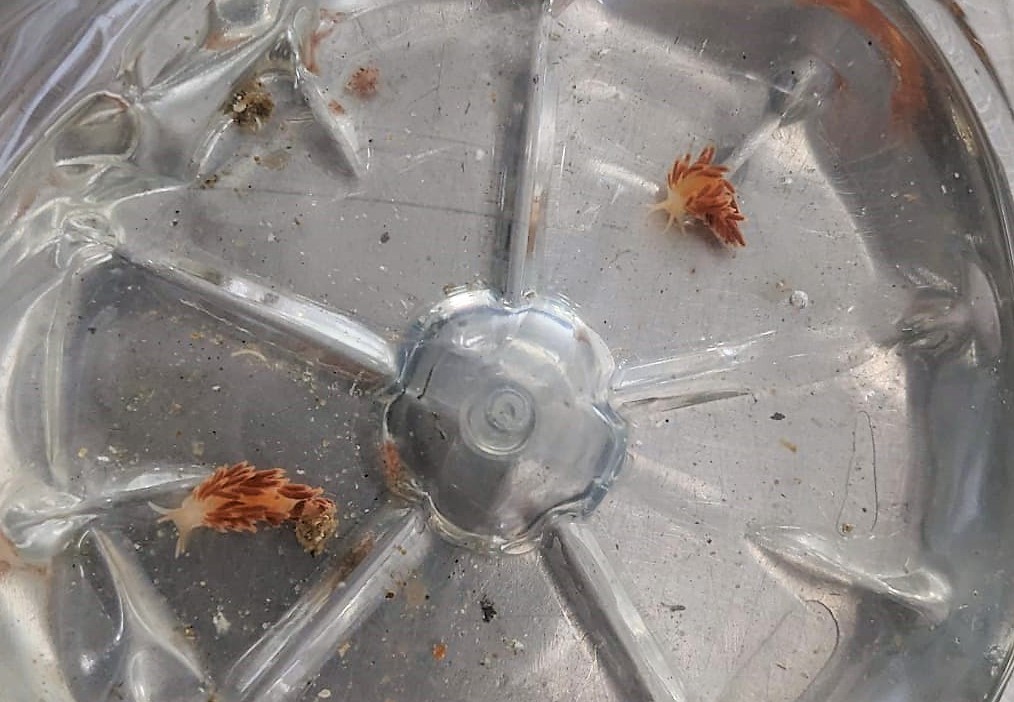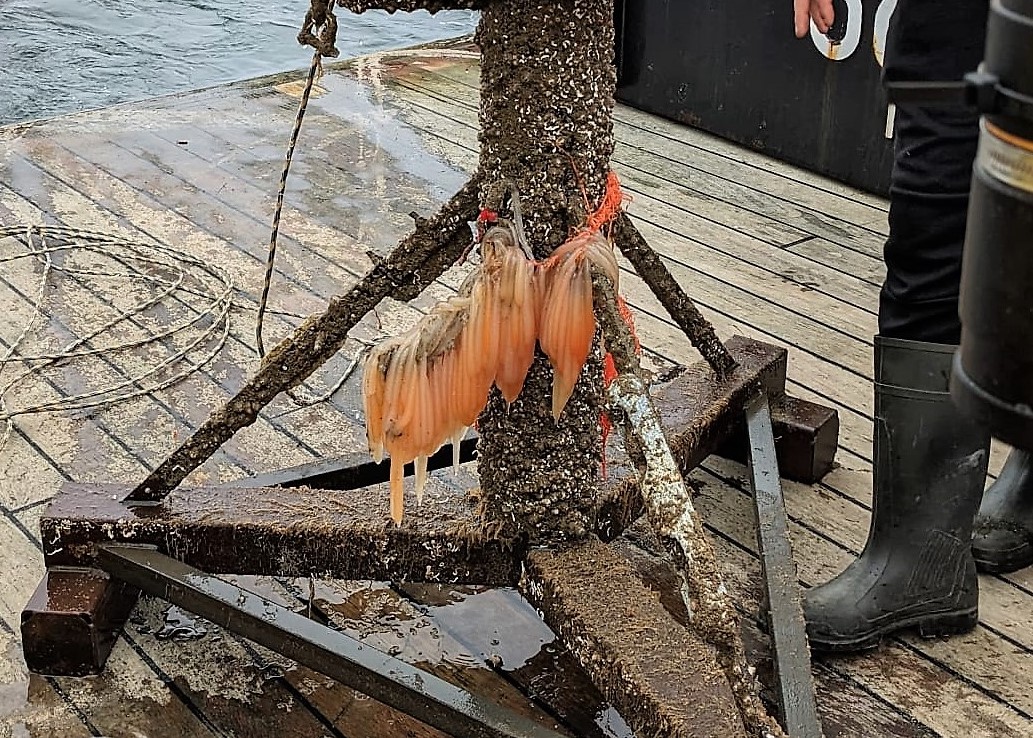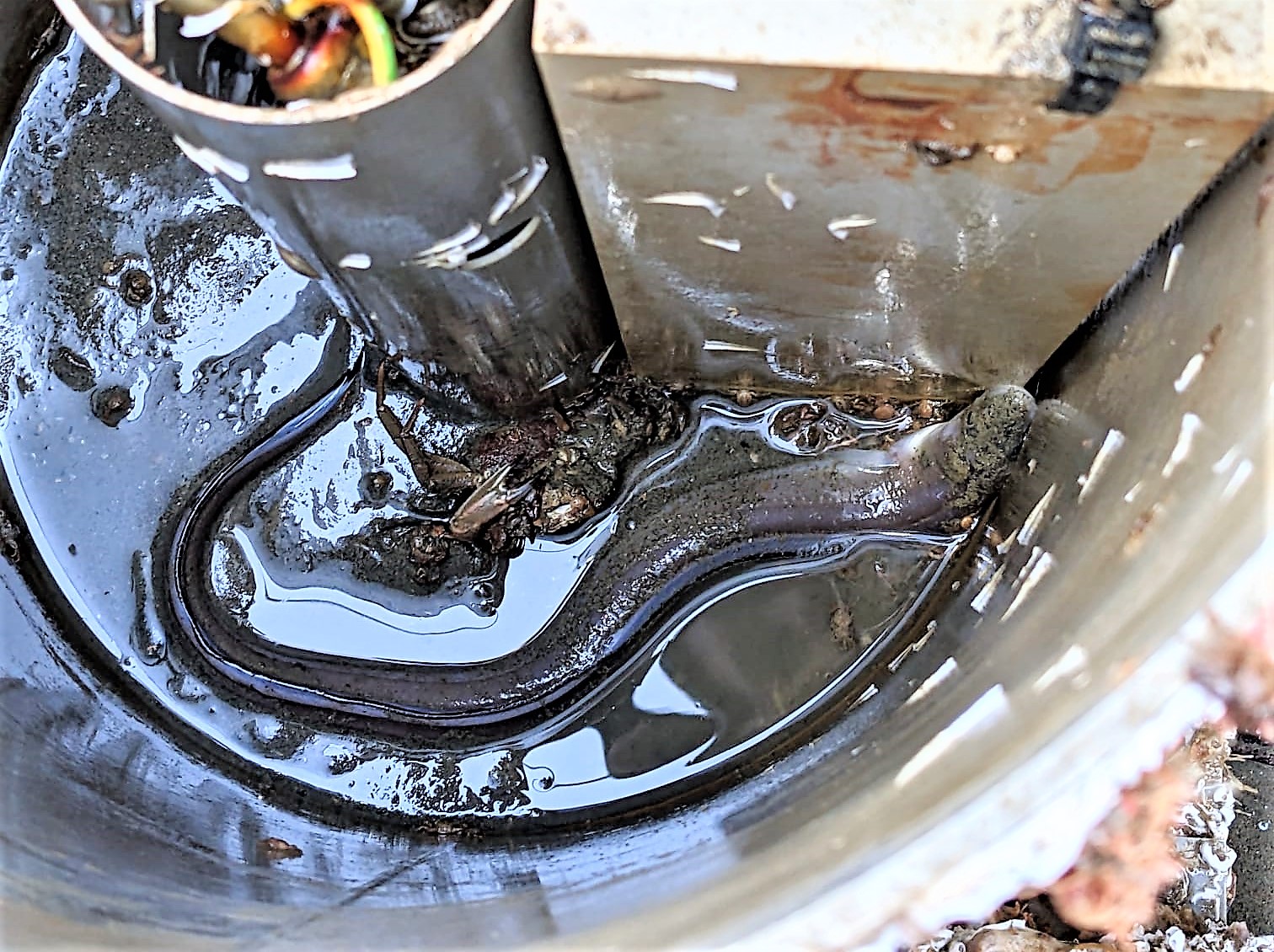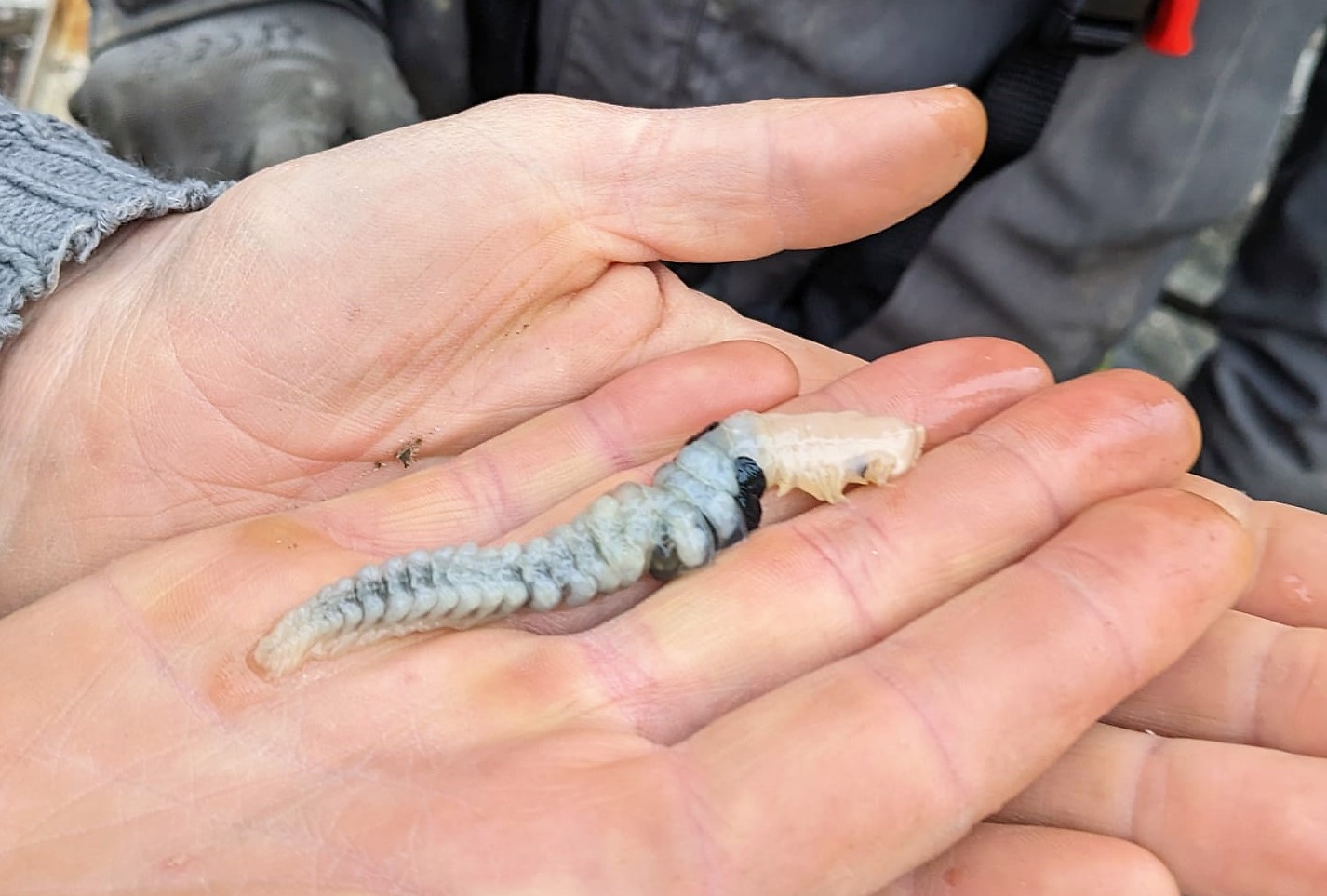One Barnacle at a time
North Sea Diaries, pt. 1
What does a barnacle look like from the inside? This and other fascinating sea creatures we encountered on a day of boat work maintaining acoustic receivers for fish tagging research.

It’s always a pleasure to be out at sea, because you realise once again how many treasures and secrets it holds.
The sea campaign
In the end of febuary 2023, I was on a 3-day sea campaign with the Simon Stevin, a 37 m long Belgian research vessel. We were out in the Belgian Part of the North Sea (BPNS). It’s the part of the sea where Belgium can decide what’s going on, basically. Fun fact: this part of the North Sea is the most researched ocean part in the world!
Take a look at where we went with the boat on the map below:
This is approximately where we went. Many receivers are placed inside wind farms, because my colleagues study the behaviour of fish in the wind farms. Also, did you know that there were THAT many shipwrecks in the BPNS? Check it out!
What were we doing?
On the Simon Stevin were 19 people in total, among them 8 scientists. We were carrying out maintenance work that needs to be done regularly for the so-called Permanent Belgian Acoustic Receiver Network (PBARN) to function. At one point in time, there are over 100 acoustic receivers in the water, which listen to underwater sounds.
Underwater sound can have different frequencies (humans can, for example, hear frequencies between 20 Hz and 20 kHz), and the receivers that are in the water for the PBARN listen to frequencies of 69 kHz. That is, because the tags that were put inside different species of fish, emit acoustic pings with \(\pm\) 69 kHz. They all differ slightly in frequency (they basically each have their own fingerprint frequency), by which the tag’s serial number, and with that the animal it’s inside, can be identified.
The acoustic receivers are attached to so-called tripods, heavy metal frames that are lowered to the seafloor. Many organisms that are free-floating in the water would like to settle somewhere, for example mussels and barnacles. And this metal frame, a hard surface on all the sand on the seafloor, is a welcome settling ground. Every 6 months or so, each tripod needs to be lifted onto the ship. Then, the data is downloaded from the receiver, and the batteries are exchanged. And, the most time consuming thing of all, the tripod gets cleaned. This was my pleasure on the campaign!
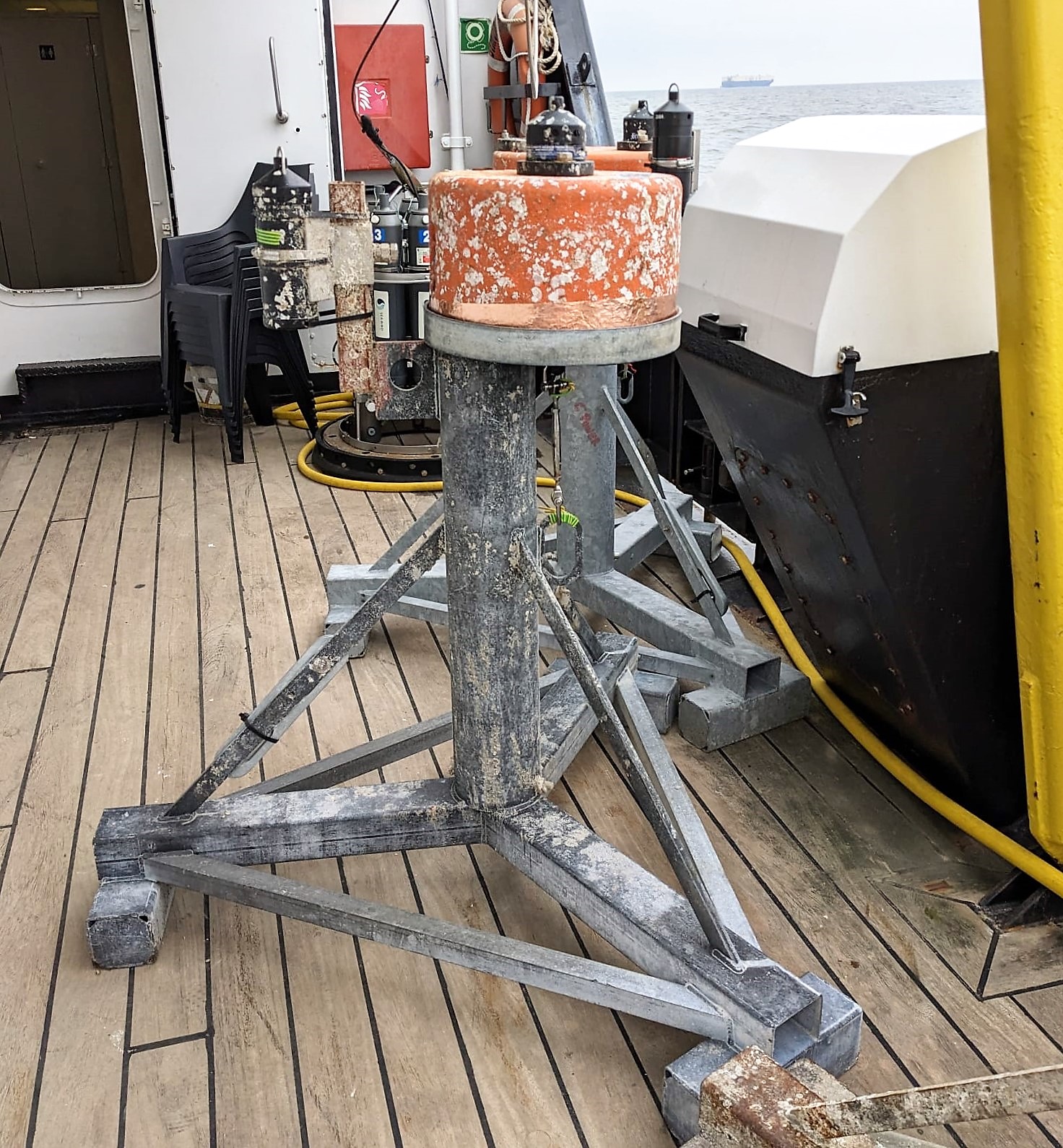
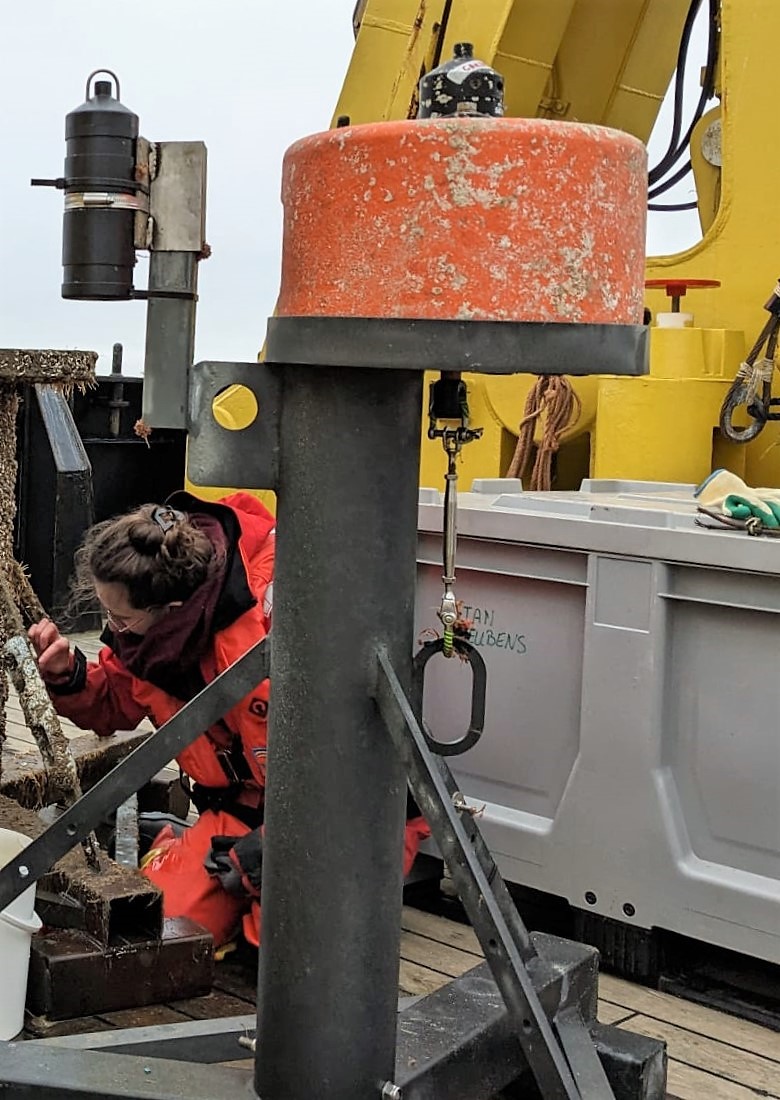
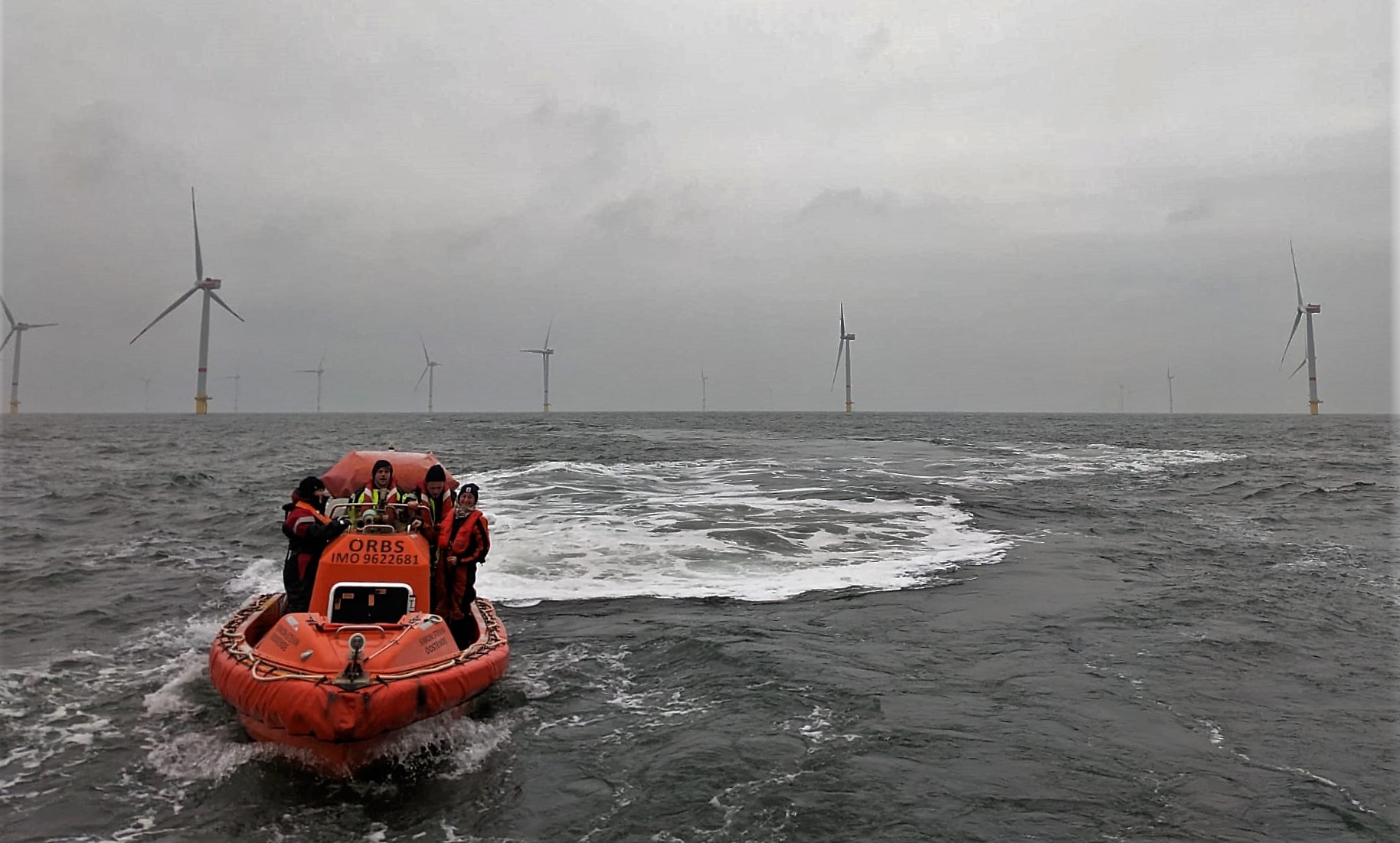
You basically need waterproof clothing, gloves, a life vest and a scraper to clean a tripod. And lots of muscles! Barnacles and other animals seem to love the tripods and they are very stubborn to get off, I can tell you that… At dinner on out first day at sea, I had scraped so much that I couldn’t hold a fork anymore :D
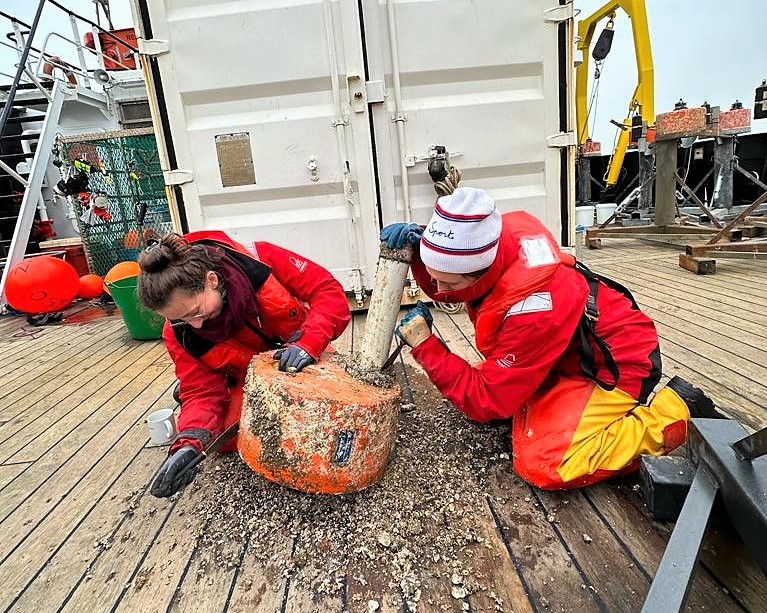
But as you clean, you see so many small animals that move about everywhere! And even small anemones we saw. And tons of crabs!
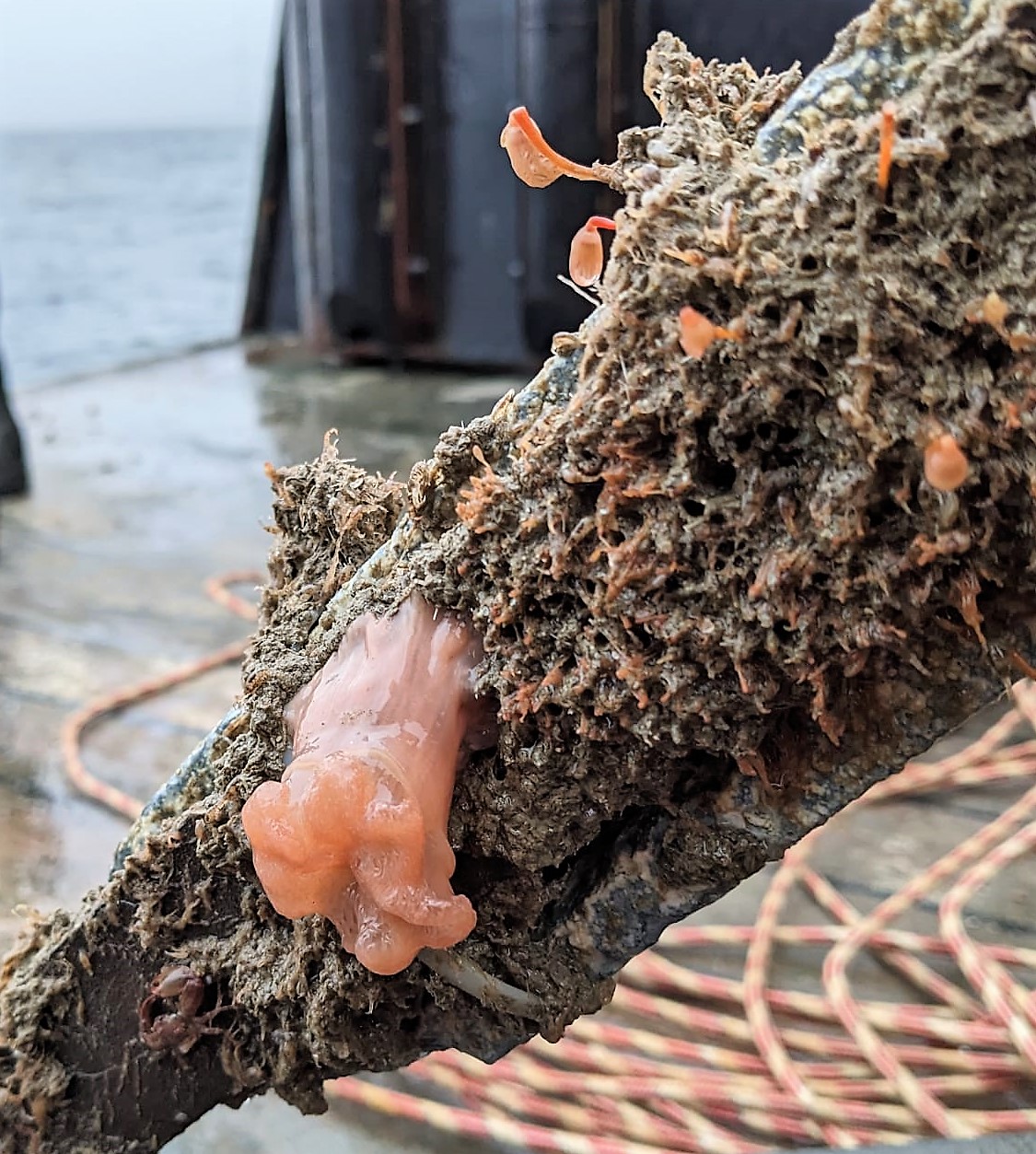


There was so much life on the metal frames, truly astonighsing! Anemones, starfish, and so many crabs. Most of the crabs were tiny swimming crabs :) But we also had several big ones!
The beauty of barnacles
Barnacles are quite fascinating animals I find. They settle down once in their lifetime and they have this super-hard-to-crack shell that we always see. You cannot really imagine that there’s a living thing inside, right? Well, during the scraping we removed a lot of barnacles, so we could see the animals inside. I feel a bit bad for all the barnacle lives I ended during these days :(
But I wanted to share what the animal inside looks like!
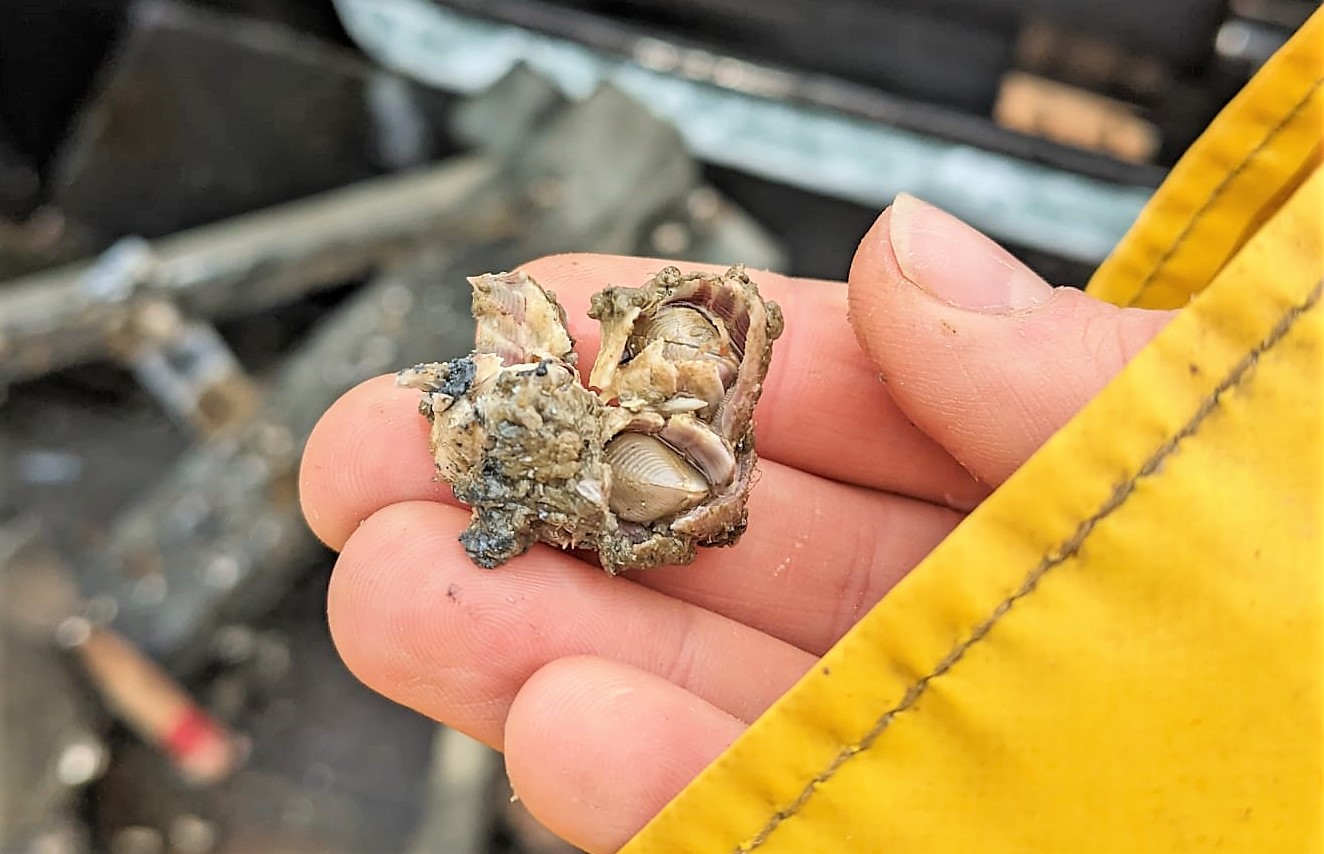
Plenty of fish and other things in the North Sea!
We found astonishingly many different sea creatures! Nudibranches (sea slugs), for example. We were lucky to have a marine invertebrate nerd on board (thanks, Bram!) that just had a great sensitivity to spotting small, special animals on the tripods while cleaning them. Did you know there were nudibranches in the North Sea? I have to admit, I didn’t. They were so tiny and so adorable!!
And the amount of different crab species we found….just mind-blowing. I challenge everyone to rethink when they say that the North Sea is boring! I didn’t want to hear it at first either, but after literally playing with a bottlenose dolphin for an hour I am slowly becoming an advocate for this muddy blue, cold water body.
